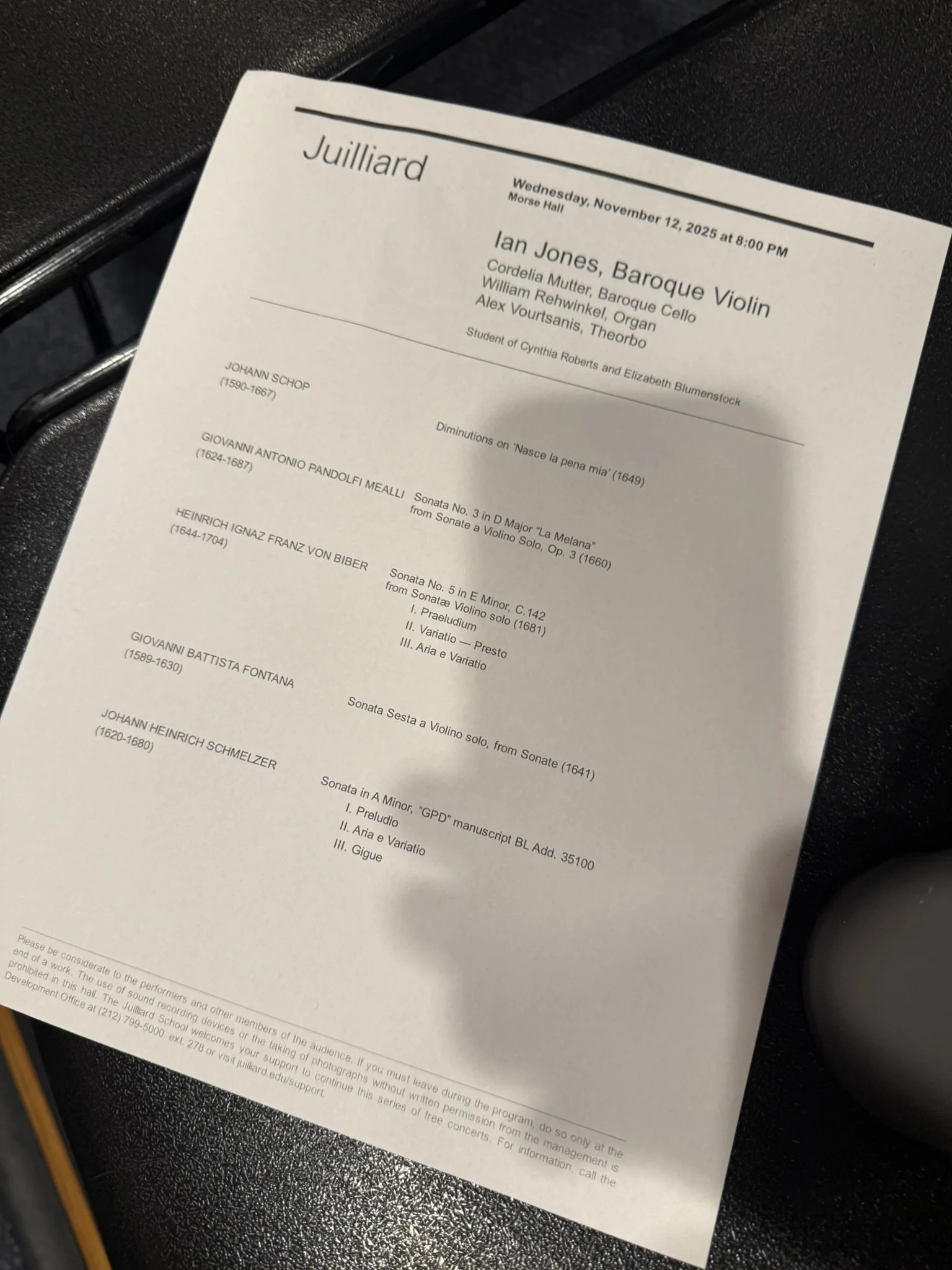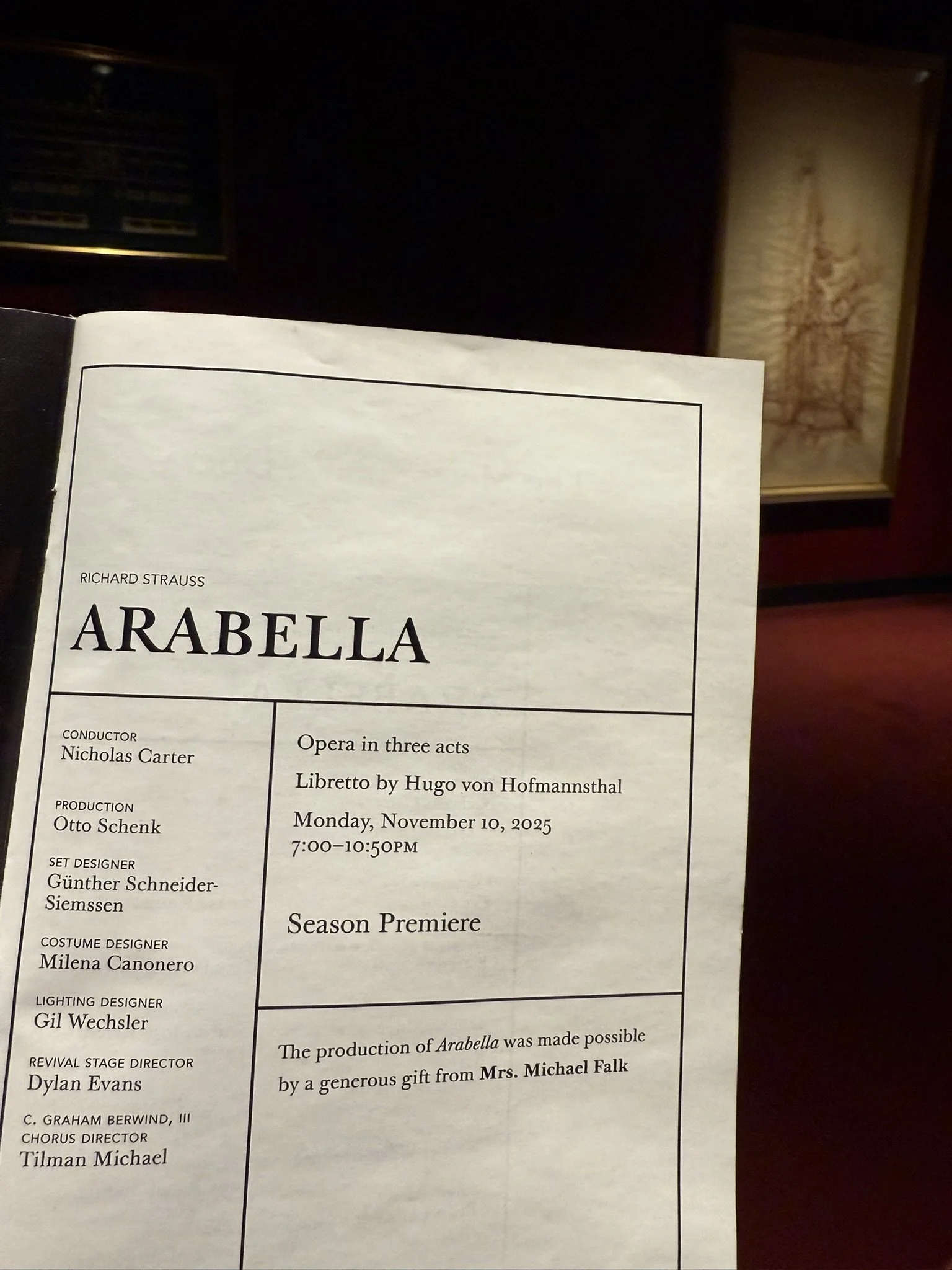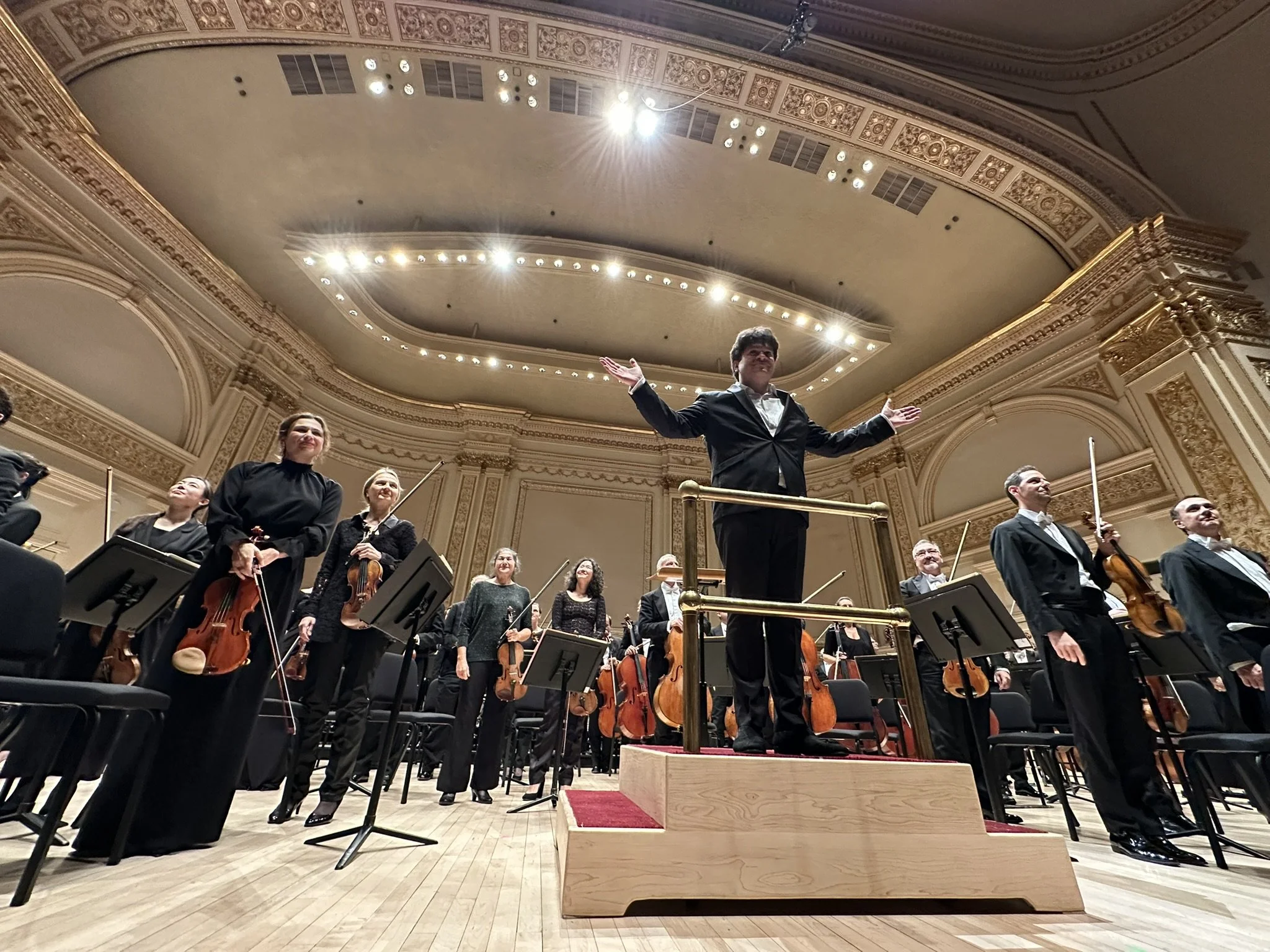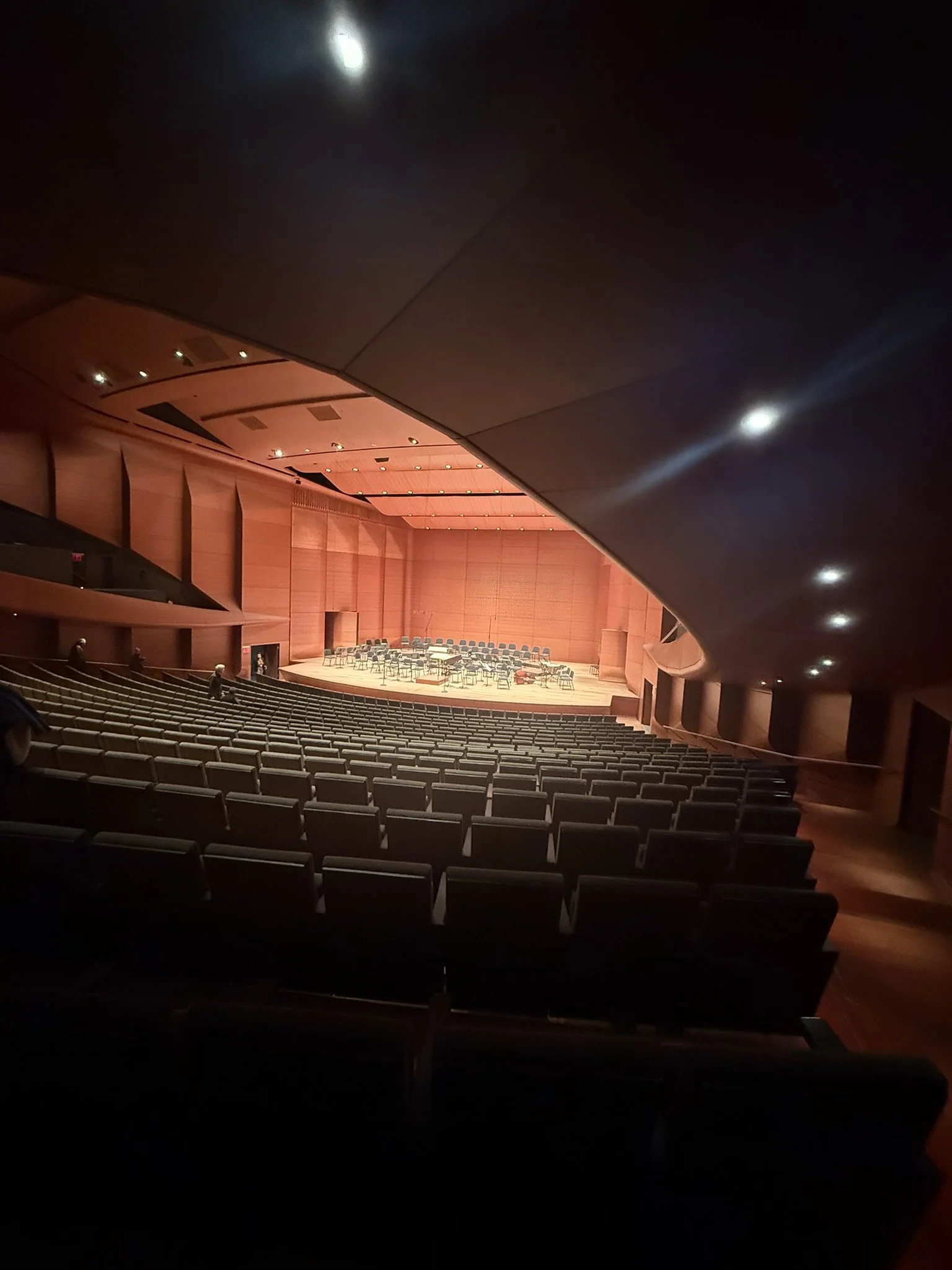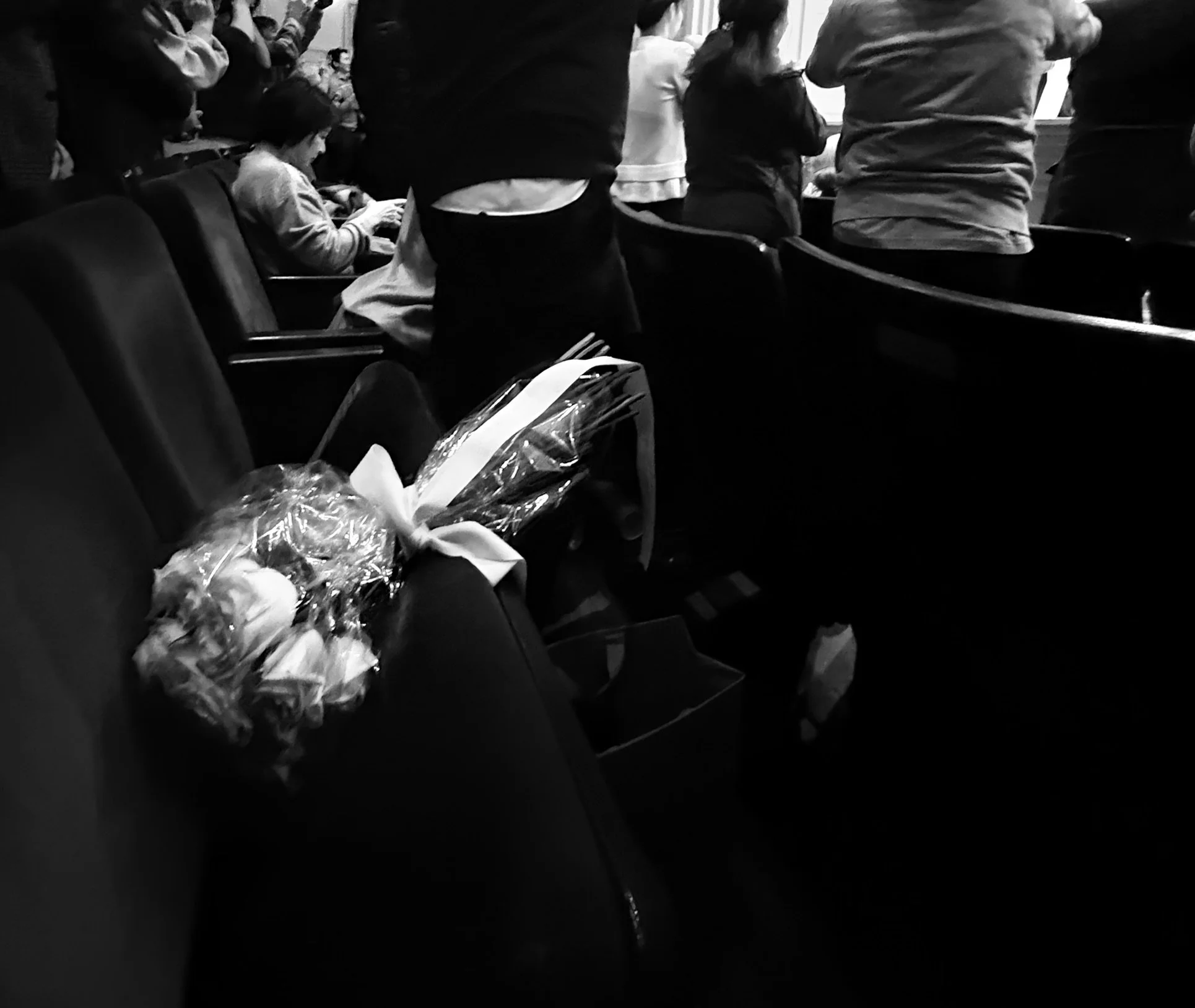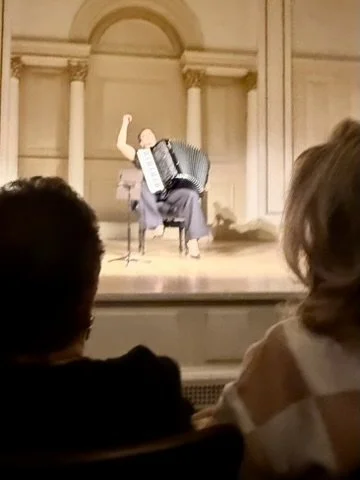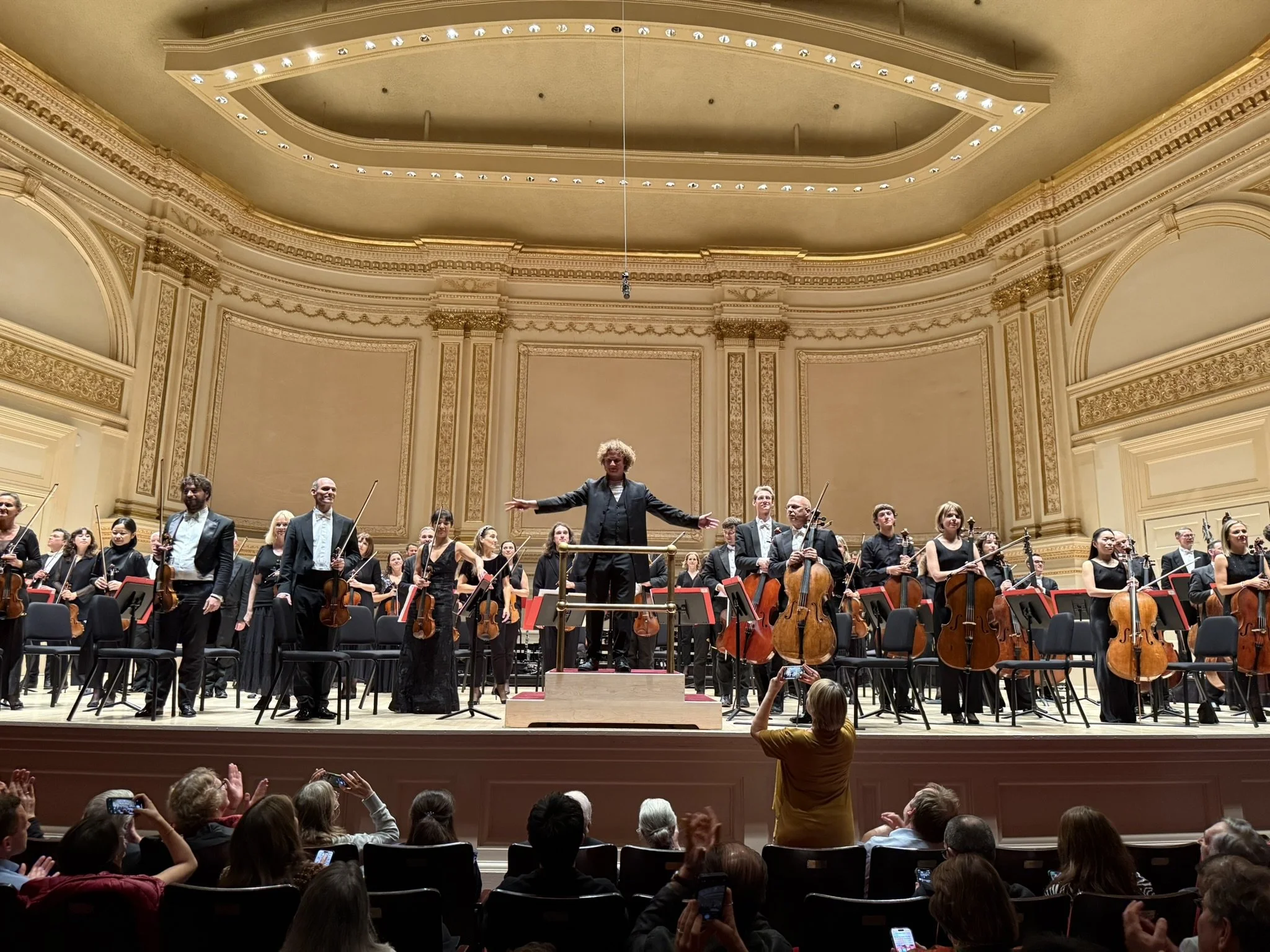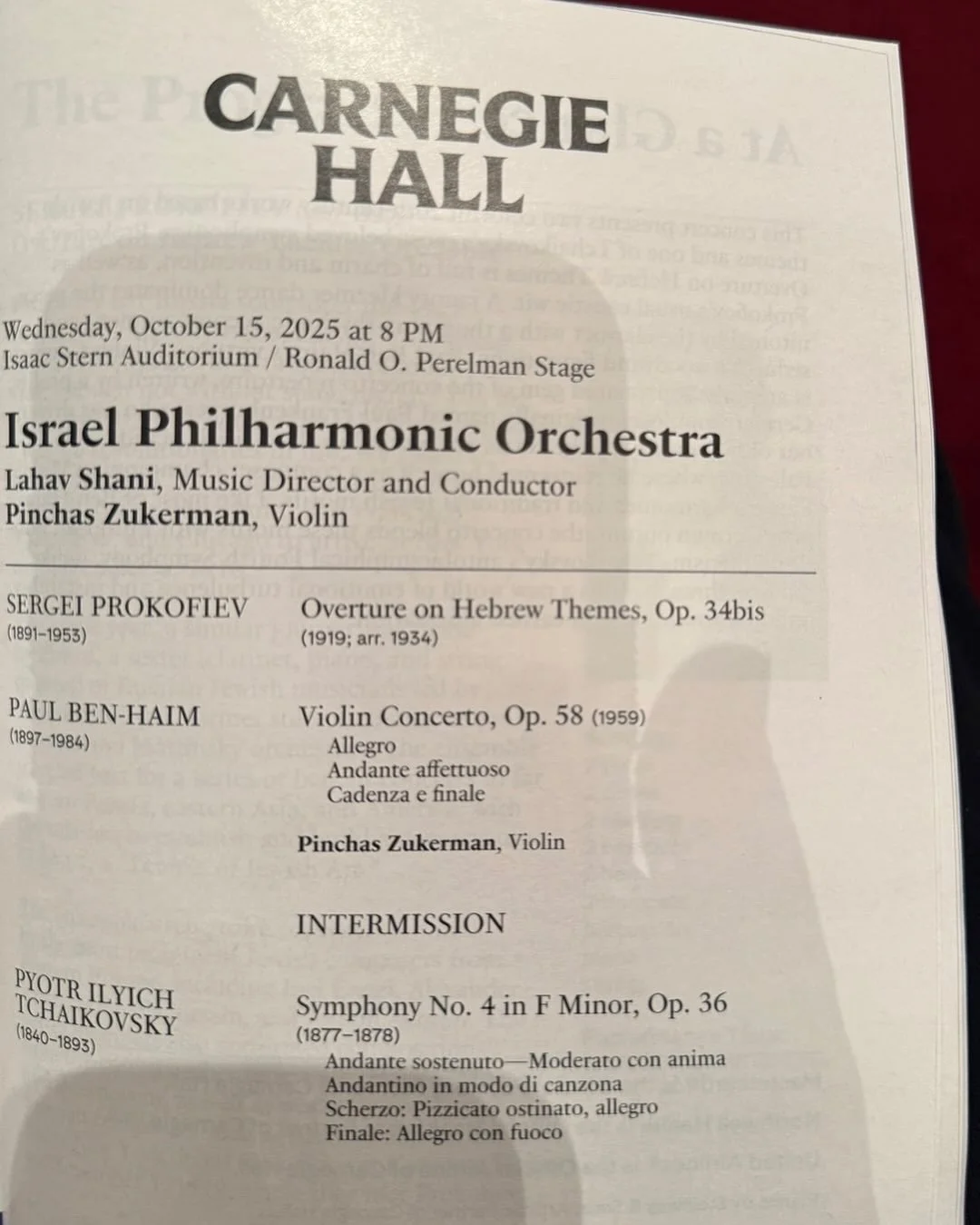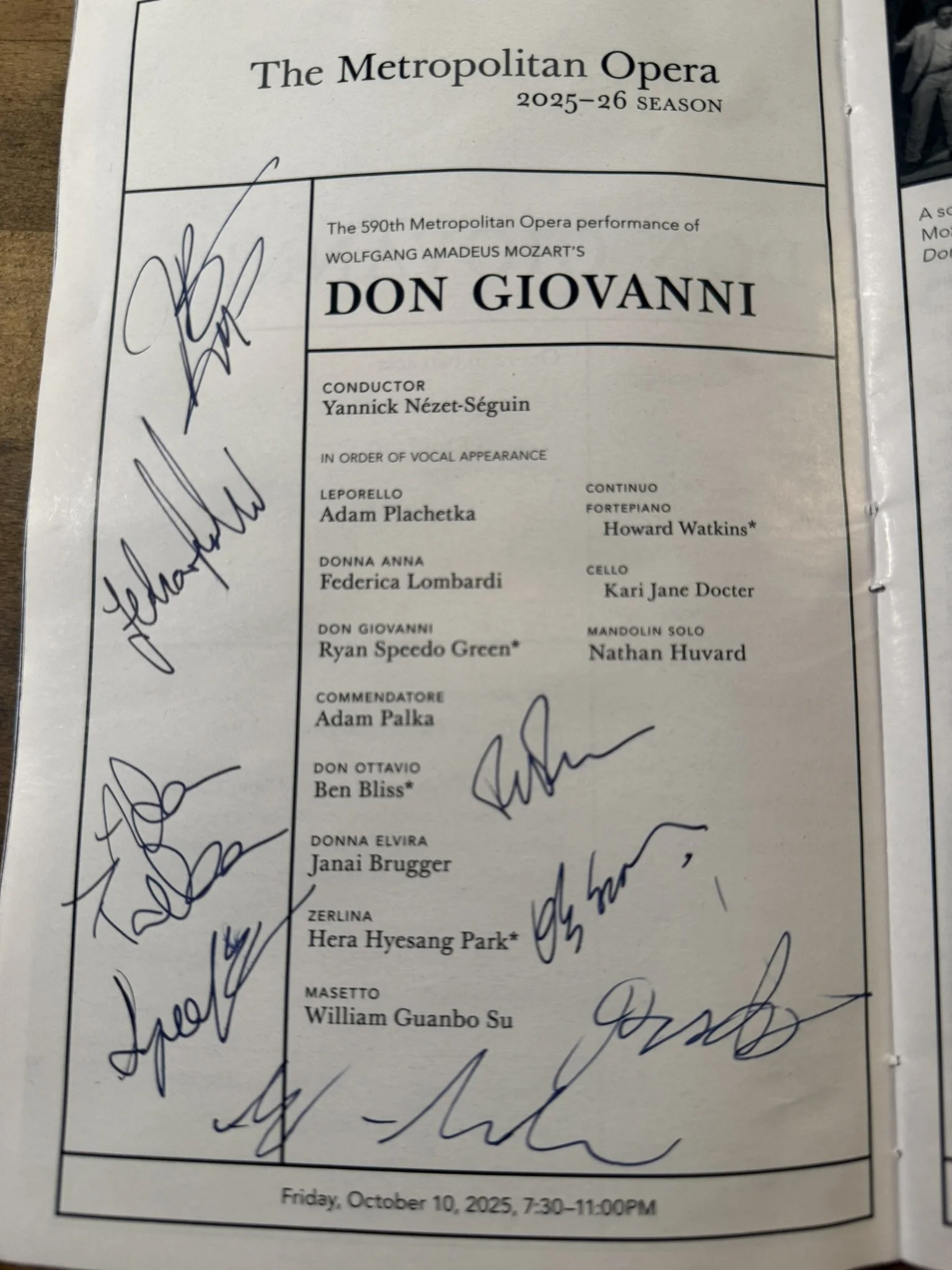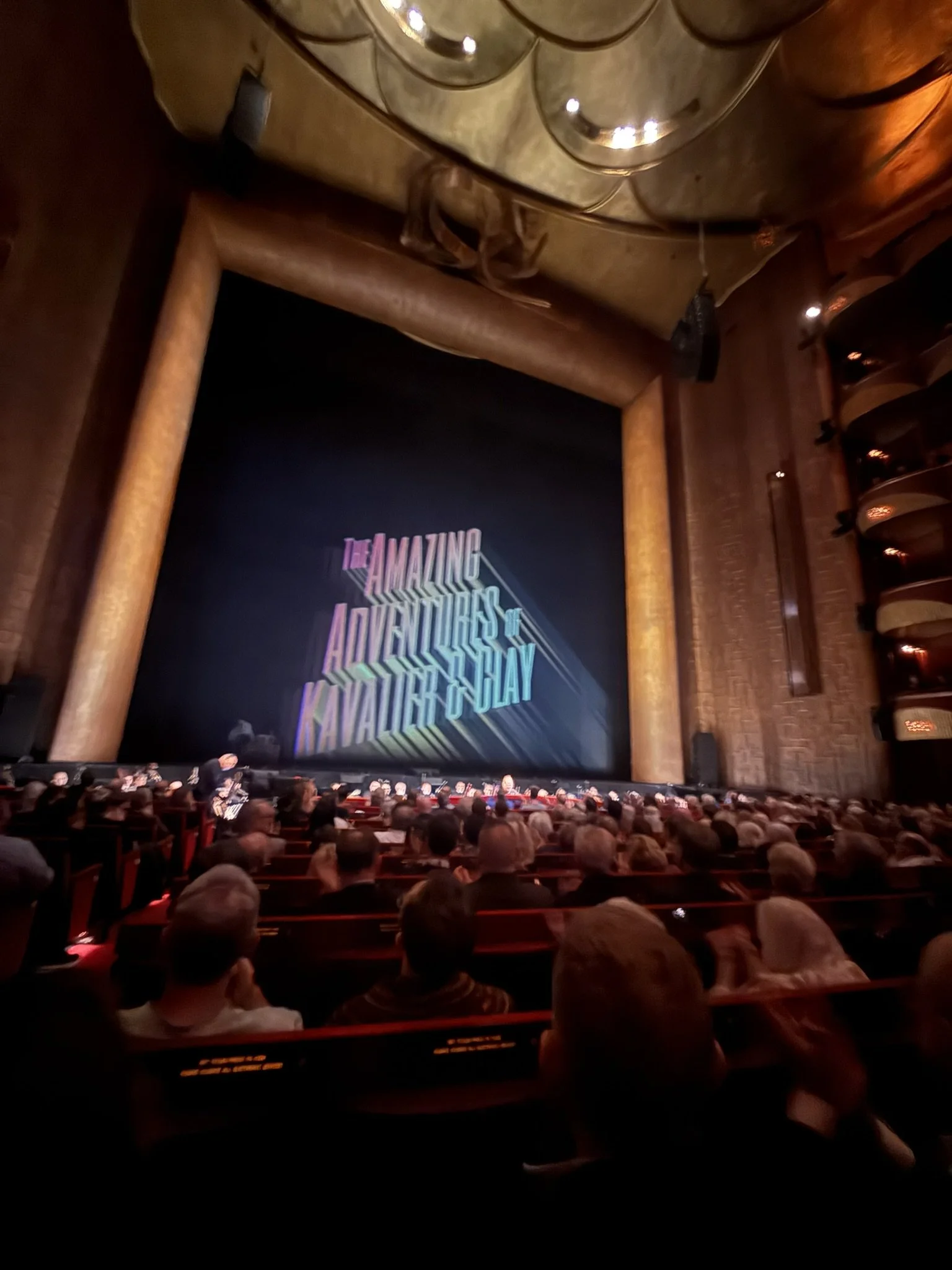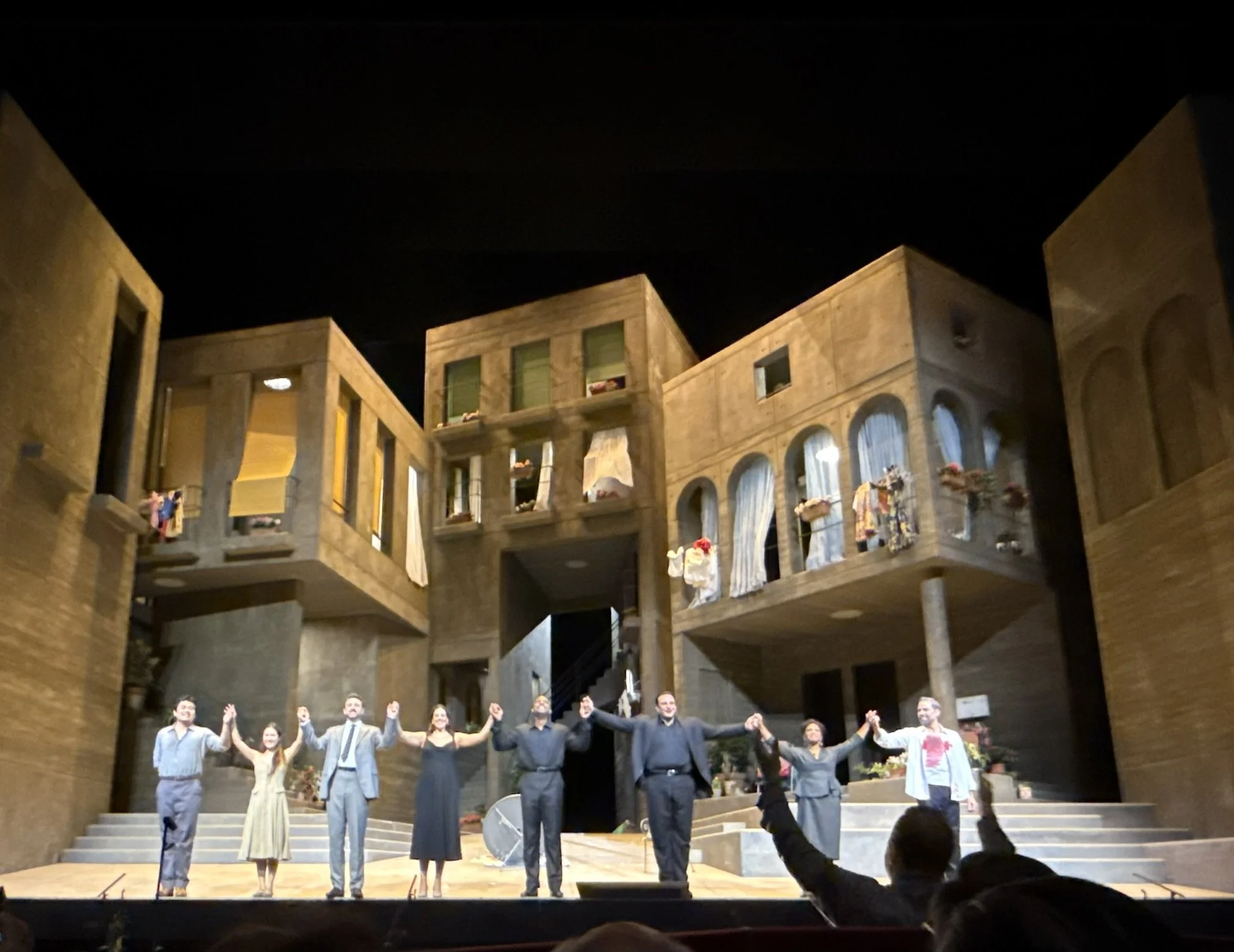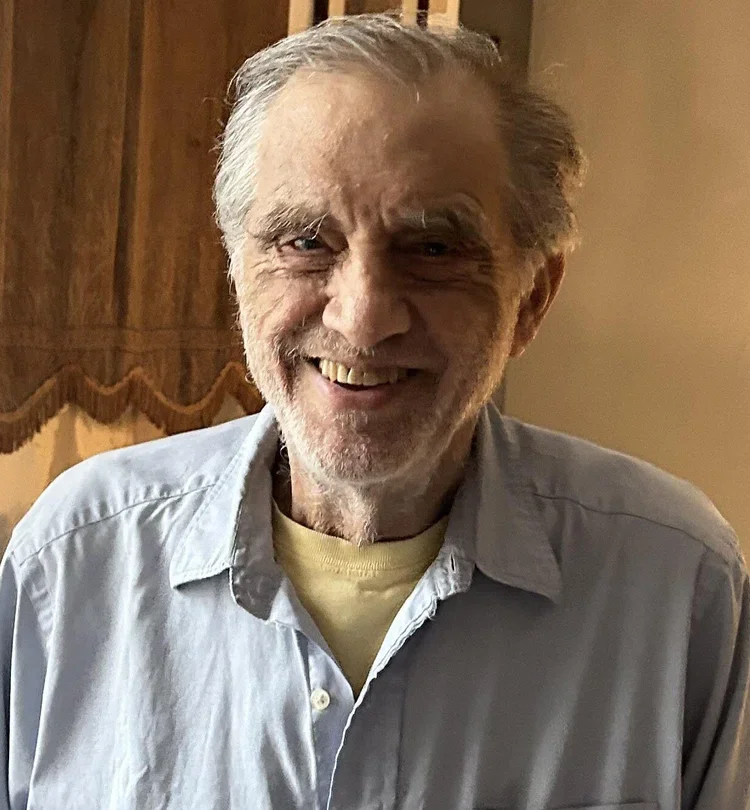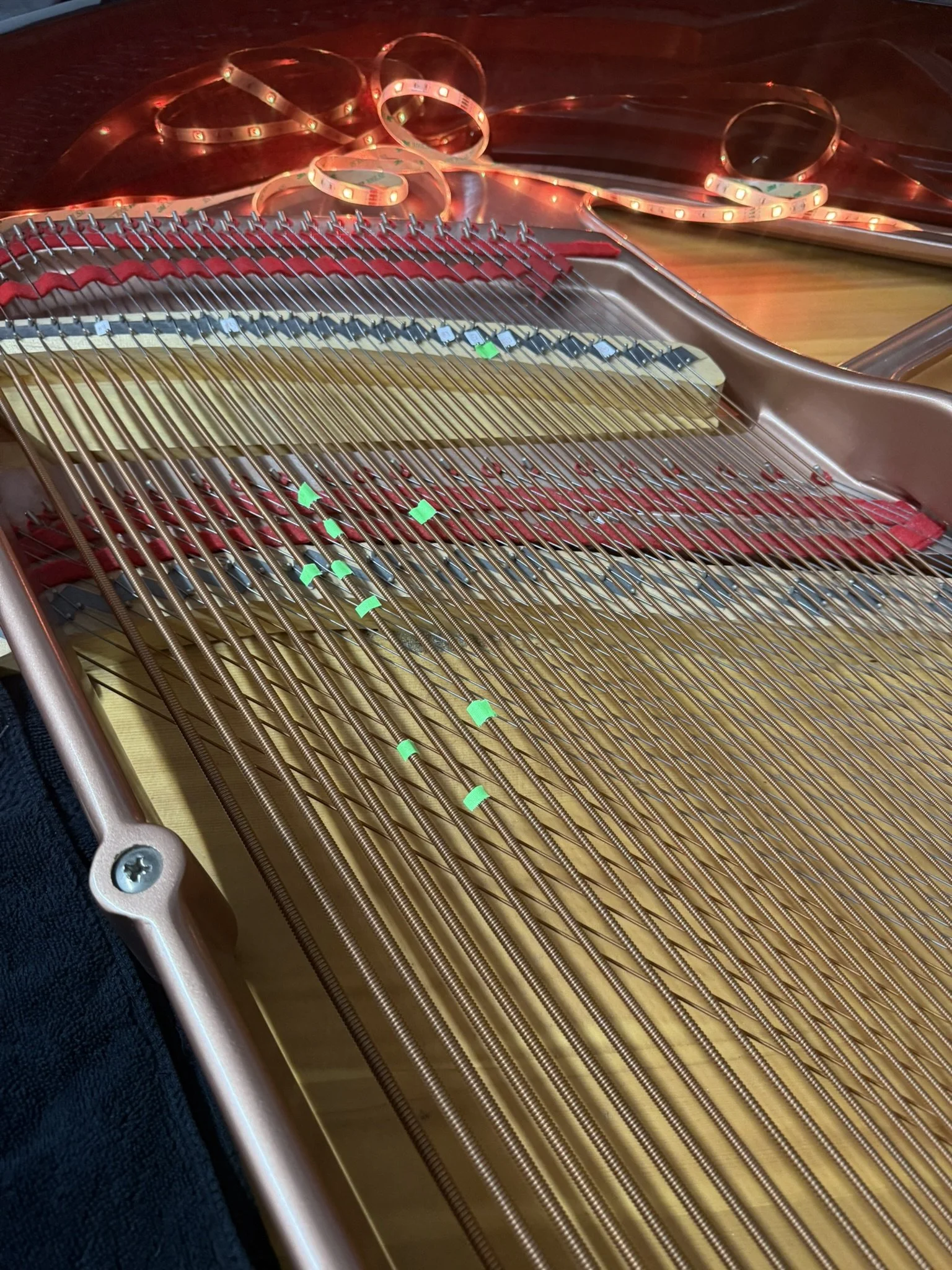Ian Jones performed Baroque violin at Juilliard’s Morse Hall. Schop’s 1649 Diminutions use intricate variations; Pandolfi Mealli’s La Melana develops motifs with tempo shifts. Biber’s Sonata No. 5 contrasts silence and richness, while Fontana’s and Schmelzer’s works blend fantasia, cantabile, and technical mastery, showing early violin artistry across Europe.
Read MoreDr. Strauss's Arabella 1 at Met
Dr. Strauss's Arabella, which premiered in 1933, started its rebirth at the Met Opera on 11.10.2025. I love it the first time. The excitement and thrill of seeing the work I had been looking forward to for the first time are still fresh, even 11 years later. It's fun to see the completed Maestro vs. Met. It's also fun to see the highly anticipated new work. But the best part is being reunited with the best friends. It’s moving to see Maestro Nicholas Carter (Hamlet and Britten) with his whole body, sending life into Strauss’s music—urging the mighty Met Opera Orchestra, led by the concertmaster, Benjamin Bowman, to sing out and come alive.
Read MoreVéritable Trésor, Orchestre National de France
Christian Măcelaru and the Orchestre National de France at Carnegie Hall on 11.9.2025. The program began with Elsa Barraine’s Symphony No. 2, Voïna (War), composed in 1938, just before the outbreak of World War II. Barraine’s work captivates with its modern French transparency condensed into a stable structure.
Read MoreHendel's last Oratorio by Juilliard415
Handel’s oratorio Jephtha (1751) was performed by Juilliard415, Juilliard School’s period-instrument ensemble, on November 8, 2025, at Alice Tully Hall. This, his final oratorio, featured accompaniments to the arias that were varied and richly textured. The vocal ensemble consisted of five singers, ranging from soprano to bass, and the orchestra was full and vibrant. Even the basso continuo accompanying the recitatives was luxurious.
Read MoreKyung Wha, Chung-the rebirth and pride at Carnegie
At 77, Giant Violinist, Chung Kyung Wha once again stood at Carnegie Hall. This marked the culmination of her musical career. After a long career, a quiet flame and prayer resonated in the hearts of the enthusiastic audience gathered in the dry Stern Hall. There was no hesitation in the rise of each note, but the quiet determination and resolve that accompanied each note. It wasn't the fiery passion of her youth, but the power to burn like a quiet flame. The violin spoke of strength and kindness that transcend technique. Each time she drew her bow, the silence seemed to breathe, as if decades had passed. And after the sound faded, a prayer lingered. Kevin Kenner let each note speak as if it were a serene melody. Their breathing overlapped, creating a conversation through sound. Kenner added a soft glow to Chung's single note, and Chung responded to Kenner's silence with a prayerful echo—a dialogue that transcended.
Read MoreSymphonic Accordion, Ksenija Sidorova, Carnegie Debut
Ksenia Sidorova gave her debut recital at Carnegie Hall's Weill Recital Hall on 11.5.2025. Almost the entire program was arranged by Ksenia and friends, overflowing with respect for the works, musicians, and friends. As a result, the pieces were deeply connected, and Sidorova's world transcended time and style, unfolding through the accordion.
The program encompassed a wide range of genres, from American minimalism to Bach and numerous folk pieces, imitating a variety of instruments and voices, including organ, folk instruments, orchestra, and voice. The final piece was Schnittke's polystylism, the opera of satire and humor.
Read MoreAx and Philadelphia 50th at Carnegie Hall
At Carnegie Hall on October 31, 2025, The Philadelphia Orchestra with Emanuel Ax offered a luminous journey through Still, Beethoven, and Brahms—a concert where nature, spirit, and human expression intertwined. William Grant Still’s Wood Notes (1947), inspired by Shelby Steele’s nature poetry, shimmered with dialogue between instruments like rippling water, blending blues, jazz, and Romantic colors into warmth reminiscent of Dvořák and Sibelius. Beethoven’s Piano Concerto No. 3 followed—Ax’s 50th anniversary with the orchestra, and Yannick Nézet-Séguin’s birth year—bridging generations. Ax’s playing, breathing between each phrase, revealed Beethoven’s humanity with timeless tenderness, his cadenza rising to a Largo so intimate it brought tears. The finale’s laughter between violinist Kim and Yannick felt like Beethoven smiling from within. Ax’s encore, Schubert’s Serenade, was a whisper of love returned. After intermission, Brahms’s Symphony No. 4 unfolded as a spiritual heir to Bach’s Cantata No. 150, its sound rising and vanishing like mist. Yannick’s refined bass lines and luminous phrasing wove Still’s nature and Beethoven’s soul into Brahms’s deep serenity—a seamless celebration of Ax, Philadelphia, and the living continuum of music itself.
Read MoreSanttu-Matias Rouvali, Nordic Beethoven, Carnegie Hall Debut
The Philharmonia’s 80th anniversary concert on 10.29.2025 opened with Gabriela Ortiz’s If Oxygen Were Green, a vivid 21st-century exploration of light, water, carbon dioxide, consonance, and dissonance. Beethoven’s Piano Concerto No. 5 followed, with Víkingur Ólafsson’s playful, defiant piano weaving through the orchestra, while principal cellist Tim Hugh and the basses created tender, whispering tones that blended woodwinds and strings in intimate dialogue. Under Santtu-Matias Rouvali, the orchestra breathed with distinct shapes, colors, and intentions, alternating freedom and discipline like a modern Beethoven. Sibelius’s Symphony No. 5 unfolded with microtonal patterns, off-beat syncopations, and evolving themes; bass and cello provided a living pulse, while horns, winds, and strings conversed with microscopic detail, merging human emotion and natural sublimity. The Andante mosso recalled Beethoven’s Ninth, the third movement rose like a creature shedding its skin, and the finale’s deep cello-flute resonance and bass drum strokes created a timeless, awe-filled silence. Over two days, the warmth of cello and double bass, especially in the Sibelius waltz encore, revealed the orchestra’s capacity to transform controlled technique into simple, joyful, Karajan-like radiance.
Read MorePhilharmonia's Libestod at Carnegie Hall
The Philharmonia Orchestra celebrated its 80th anniversary with a three-week US tour, culminating in its final performance at Carnegie Hall. It was a performance that captured the breath and heart trembling of their past. The lustre of the strings, the warm breath of the woodwinds, and the brilliance of the brass—the gentle light of old recordings—represented the love, death, and salvation of Romeo and Juliet. The loneliness beneath Prokofiev's brightness, particularly the momentary silence in the second movement, seemed to stand still. And then, Kantorow's Wagner/Liszt rendition of Tristan's Death of Love from Isolde, which released this loneliness, projected the light and shadow of the Philharmonia Orchestra's lifelong love and death, forever etched in the hearts of the audience.
Read MoreSilence is the Power, Arvo Pärt's 90th at Carnegie Hall
At Carnegie Hall on October 23, 2025, Paavo Järvi led the Estonian Festival Orchestra and Choir in a luminous celebration of Arvo Pärt’s 90th birthday—a journey through sound, silence, and faith. From the solemn bell of Cantus in Memory of Benjamin Britten to the turbulent energy of Perpetuum Mobile and the haunting redemption of La Sindone, each work revealed Pärt’s struggle for spiritual truth amid oppression. The choir’s unified cry in Adam’s Lament evoked humanity’s exile and hope, while Tabula Rasa, with Midori and Hans Christian Aavik, blazed with life before dissolving into sacred stillness. An encore of Passacaglia glowed with Brahms-like warmth, followed by the serene timelessness of Fratres and the cathartic faith of Credo. The evening ended in the gentle peace of Estonian Lullaby, affirming Pärt’s profound humanity—his art born not of profession, but of silence and soul.
Read MoreThe Principals of the Israel Philharmonic Orchestra at Carnegie Hall on 10.18.2025
Israeli talks by Haim and Tchikovsky at Carnegie Hall
The third day of the Israel Philharmonic's Carnegie Hall performance. Shani is truly fascinating. First of all, his conducting looks Barenbom. He plays the final, dragging note of Tchaikovsky's 6th Symphony. The double bass is muted and plays the final note. The double bass stops. The orchestra's consciousness continues even after the sound has died down. The score specifies the length of the piece, and it ends with a fermata. He doesn't lower his baton. When Jeff, sitting next to me, applauds first, this memory becomes eternal. Shani is a conductor who unleashes everything in the concert. In one section, Shani did not time the Munich Philharmonic's principal cello, Thomas Ruge, and principal violin, Dumitru Pocitari, to enter simultaneously. Since they both enter at their own pace, the individuality of the cello and violin sections, each carrying the main melody, is highlighted. Shani's conducting brings out the artistry of each performer and unlocks unknown possibilities. Even when they are not synchronized, their individual voices eventually become a dialogue, overflowing with a single, powerful energy.
Read MoreLa Fille du Régiment, the Colors spread like a live fresco on an autumn night in New York.
Donizetti’s La Fille du Régiment, which premiered in 1840, opened at the Met Opera on 10.17.2025. Refined and flexible overture. The strings flowed in a legato unlike Mozart or Bellini—light, supple, smooth as silk. Under Sagripanti’s brushwork, the Met Orchestra’s colors spread like a live fresco on an autumn night in New York.
Read More2nd day Israeli and Shani at Carnegie Hall
The Israel Philharmonic Orchestra and Lahav Shani’s second Carnegie Hall concert on October 16, 2025, opened with Bernstein’s Halil (1981), a haunting memorial to a young flutist killed in war. Principal flutist Guy Eshed’s faint singing and scraping sounds intensified the music’s atonal and tonal shifts, evoking Hindemith, Berg, and postwar American composers, blending menace, hope, and prayer. A silent tribute followed the final non-vibrato flute note. Ben-Haim’s Symphony No. 1 then burst forth with Wagnerian power in the strings, revealing Mahlerian structure infused with Yemeni prayers, marches, and oriental rhythms. The lyrical second movement recalled Adagietto, while a lively tarantella showcased violist Dmitri Ratush’s dark tone. Tchaikovsky’s Symphony No. 5 closed the evening with a heavy, lingering opening and surging brass power, as Shani led the orchestra through intensifying repeated themes, building to a feverish, triumphant finale.
Read MoreIsraeli and Shani at Carnegie Hall
The Israel Philharmonic and Lahav Shani at Carnegie Hall on 10.15.2025. Each one, thoroughly prepared and crafted with exquisite attention to detail, was an absolute joy. This is not only their deep understanding of the music, of the conductor, and of each other, but also the sense that they must exchange ideas, sometimes even clash, and ultimately build something together. I felt that they all spoke the same language, no matter what they were playing. All was playing for the others, and everyone was playing for one.
Read MoreAutographed by from left top, Janai Brugger, Federica Lombardi, Adam Palka, Ryan Speedo Green, right top, Ben Bliss, Hera Hyesang Park, Benjamin Bowman, and Milan Milisavljević
Met Don Giovanni 6th
I saw the 6th performance of Don Giovanni at the Met. Compared to the first performance, the orchestra’s more polished, period-informed approach felt intimate, light, and like a playful conversation. Against this backdrop, the singers’ refinement and subtle humor allowed Mozart’s modernity to shine at the Met. From beginning to end, the music was alive—overflowing with vitality. The texture of the orchestra’s sound was completely different when the Commendatore was alive versus after he was killed. The orchestra masterfully distinguished between a human brimming with life and one on the verge of death. When I focused on the singers, the orchestra’s sound came through even more vividly.
Read MoreCrystal resonance, Chelsea Knox, Flute at Met Oprchestra on 1st La Sonnambula.
Villazón’s La Sonnambula
Rolando Villazón’s production depicts the village as strict and repressive, using minimalist sets and Alpine projections to contrast Amina’s sleepwalking freedom with societal pressures when awake. Nadine Sierra skillfully portrayed both her liberated and vulnerable sides, while the orchestra mirrored this with bright string tuttis for waking scenes and ethereal textures for dreamlike moments, emphasizing Amina’s innocence and marginalization.
Read MoreHung on! Met Opera's active speaker
Mason Bates hung speakers from the ceiling of the world’s largest opera house, which convinced someone who had enjoyed Detroit, German techno, or other electronica that a fine symphonic experience was the event. The sound filled the vast space of the Met. Met orchestra, including Wagner tubas, was layered with electronics. Speakers were positioned on both sides of the stage and from the ceiling, blending electronic sound as if to create a new species, resonance, and power in the orchestra. Whereas I usually find PA effects distracting, they were intricately integrated. For someone like me, who has enjoyed both classical and electronic music, it was a new sensation to experience The Amazing Adventures of Kavalier & Clay at the Metropolitan Opera.
Read MoreMusic Talks / Don Giovanni at Met
Mozart’s masterpiece comes vividly to life. Emotion infused the score, where even a sigh became music, and the Met orchestra and singers revealed the complexity of human ties. Yannick Nézet-Séguin let Mozart’s voice emerge freshly, alive with individuality and truth.
Read MoreInward Journey by Philip Ellis Foster
Although the sound directions are random, each line of notes continues at regular intervals. Each line repeats small crescendos and decrescendos, and while composed of limited elements, the notes are placed with high precision yet randomly. Double stops make me perceive two distinct characters, and the harmonics follow a consistent pattern. As these sound lines pass through, the combination of scattered notes and the regularity of the harmonics prevents any sense of déjà vu in thought, dissolving tension and expectation, and creating a natural space and quiet openness in the mind. This is healing for the heart and discipline for the mind that cleans up my brain trash.
音の方向はばらばらでありながら、それぞれの音のラインは一定の間隔で続く。各ラインは小さなクレッシェンドとデクレッシェンドを繰り返し、要素は少ないが、音は高い精度で、かつランダムに配置されている。ダブルストップをかけると、音から二つの異なるキャラクターを同時に感じることができ、ハーモニクスには一定のパターンが存在する。こうした音のラインが自分の中を通り過ぎると、ばらばらに置かれた音と規則的なハーモニクスの組み合わせによって思考に既視感は生まれず、緊張や期待が解け、心に自然な余白と静かな開放感が生まれる。それはまるで脳にたまったごみを取り除いてくれるような感覚。この方の近くにいると気配に圧倒される。気取りがなくユーモアに溢れ、しかしとても厳しい目で、温かく作品を眺めたり楽しんだりしている。
"Inward Journey" by Philip Ellis Foster, performed by the JACK Quartet
Recommended work : C-A-G-E-D
The house of contemporary, Yarn/Wire’s Bushwick studio.
On the way there, Mäkelä’s Berlioz is playing in my head. Yarn/Wire’s studio in Bushwick, Brooklyn, where they've been fifteenth year. The program began with Igor Santos’s living to fall [music and rain]. As fragments of video unfolded alongside live sound, the consciousness of the four performers made the images—rain, shattering glass—appear vividly.
Read More
